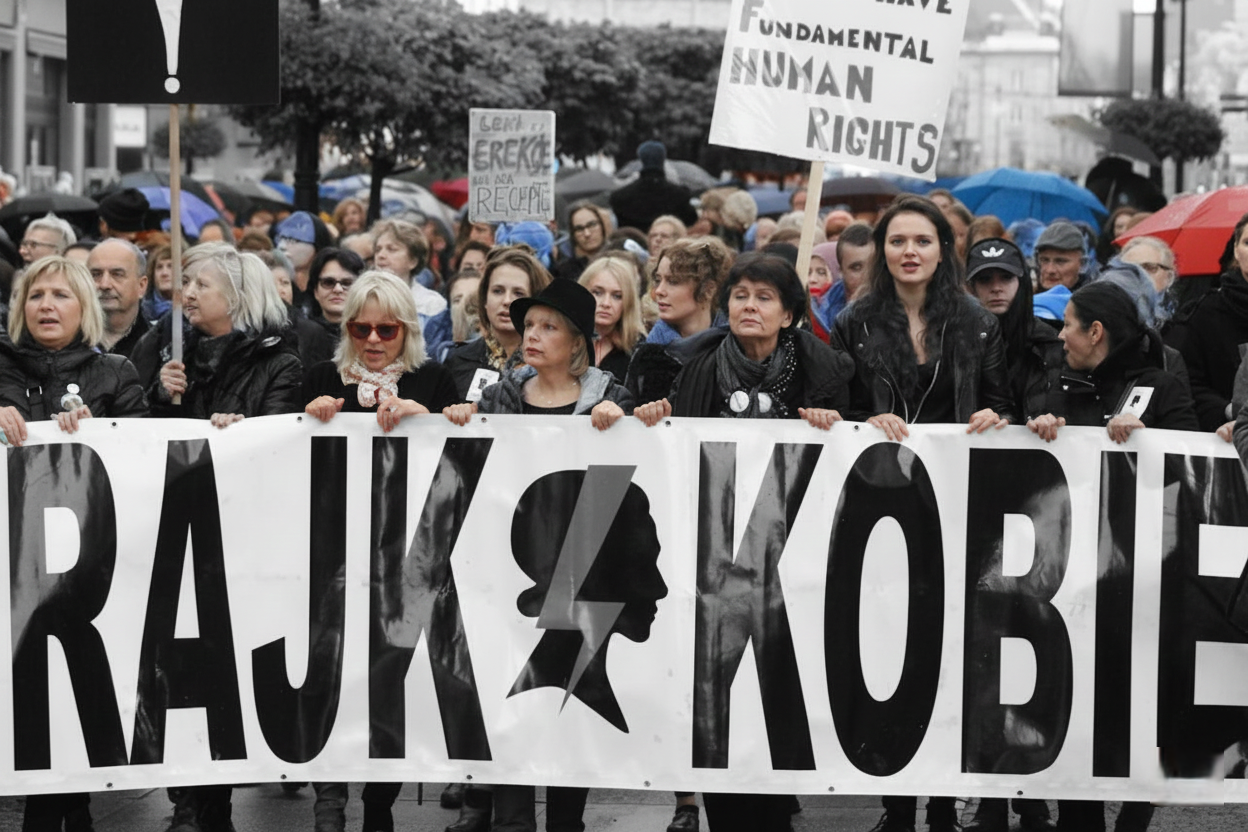Science
Do You Fear Walking in the Woods? This Anxiety Is Affecting More People
15 December 2025

The phrase ‘be yourself’ is among the expressions we hear most in our daily lives. Subconsciously, we know that to lead a happy life and find fulfillment, we must live harmoniously with ourselves. We each sense that within us lies an inner voice guiding us in the natural rhythm and pace of our actions: yet do we always hear it? And if we do, do we listen? Perhaps our pursuit of authenticity can often be overshadowed by others’ expectations and needs. How to be authentic amidst the complexity of daily choices and decisions?
Observing people in contemporary society, we see that the desire to be authentic has become a defining characteristic of our existence. We strive to live in a way that allows us to express our true selves and fulfill our potential in all of life’s aspects. We don’t want to pretend. Mounting pressure to conform to others, to bend to expectations and demands of the reality around us, is draining. For many, following scripts that others write generates further stress, internal tension, and a growing sense of inner discomfort. Over time, that stance fosters resistance and strengthens rebellion. Freedom and self-fulfillment are the paradigm of the contemporary human being. Everyone wants to be authentic. Everyone aspires to self-realization: their needs, expectations, goals, and dreams. Yet what does it actually mean to be oneself? What behaviors does this entail? Ultimately, can each of us genuinely live authentically?
In seeking to answer these questions, valuable insights can be found in works by Martin Heidegger (1889–1976), a philosopher who remains as eminent as he was controversial, who earnestly grappled with the issue of authenticity. Heidegger emphasized the necessity of openness to life and understanding – the value of pausing to reflect on our desires and choices, then consciously adopting a specific path to shape our lives in alignment with our freedom. However, when we examine his life and choices, it’s clear that theory doesn’t always align with practice. Being aware of differences between authenticity and inauthenticity doesn’t automatically ensure that a person chooses the former. In their freedom, individuals can opt out of living in harmony with themselves.
Read also:
For the purpose of his analyses, Heidegger designates human beings as Dasein, which can be translated as “being-there.” This term is significant, indicating our rootedness in a specific time and place. Each of us shapes our life within certain conditions. While we may not control all of these, what’s most important is striving to understand them. According to Heidegger, issues of understanding and openness are crucial for individuals who guide their lives consciously. First, he appeals to us to pause and reflect, trying to understand. What do I actually desire? What am I striving for? What guides me? What am I running from? With what do I agree, and what do I reject? Am I aware of my actions’ potential consequences? These are but a few examples of questions he proposes that can provide a deeper understanding of our lives. How often do I find time or even feel the need to ask such questions? And do I have the courage to confront them? Second, when Heidegger writes about open existence, he refers to openness to life, to all that’s emerging within the sphere of our daily actions and undertakings. How many of these do I notice due to a capacity to slow down, reflect, and contemplate, and how many escape my notice?
Following Heidegger’s reflections, one can get the impression that the contemporary individual overlooks more and more aspects of everyday life, constantly rushing towards something better, something newer, and as a result, having neither the opportunity nor the occasion to pause. Perhaps that’s why an increasing number of people feel a significant lack in their lives. Burnout, extreme fatigue, and intensifying depression become increasingly common. We find ourselves in societies of excess where everything’s abundant: boundless functioning best described as overactivity, hypersensitivity, hyperexcitability, and by concepts such as multitasking and zapping (channel surfing).
Another philosopher, Byung-Chul Han (b. 1959), aptly describes the contemporary individual’s state, building on Heidegger’s diagnoses and extending them into the present day. Han writes about the “violence of positivity that arises from overproduction, excessive efficiency, or an excess of communication.” In response, concentration techniques, mindfulness workshops, and yoga practices grow increasingly popular, emphasizing mindfulness, attentiveness, and slowing down in approaching life. In the wild rush towards the future and our particular visions of happiness, we often lose ourselves, and too frequently we aren’t aware it’s even happening.

Here’s precisely where Heidegger’s reflection on authenticity and inauthenticity in choosing life paths seems so important today, and so necessary. True to his role as a precursor to contemporary existentialism, Heidegger explicitly addresses the issue of freedom of choice. Each human being is free and can therefore make decisions about their own life. In reality, there are two possibilities: I can be true to myself shaping my life according to my sense of freedom, or surrender my selfhood and conform to others, sacrificing my individuality. These two directions of human existence remain relevant and particularly significant in facing the transformations an individual copes with today.
What does living authentically mean, as Heidegger presents it? I’m being true to myself when actively designing my life, in other words, when I have a plan. This means approaching my existence consciously, striving to understand as much as possible about what life brings me, embracing subsequent opportunities and challenges with openness. Dasein, therefore, creates its own authenticity by adhering to its plans and intentions. Each of us is able to construct our authenticity by defending our beliefs and principles, being open to others’ opinions and proposals while also exercising critical discernment regarding them. Here, understanding implies the ability to choose, which is to say to reject something, letting go of certain aspects in order to select something else, then fully committing oneself to it.
However, not everyone has the willpower and strength to act this way. Living authentically, emphatically, demands courage. It involves self-creation, yet on the other hand it requires a willingness to refuse and resist that which threatens one’s freedom. Many find it easier to conform to the rest. Many prefer abandoning their own goals and dreams because fulfilling them demands too much. According to Heidegger, that attitude signifies an escape from life, resulting in comfortable though passive assimilation into the crowd. In brief, that’s the essence of inauthenticity. Individuals gradually draw back from their own plans, placing their freedom in others’ hands who then decide on their behalf, directing things at their own discretion. Heidegger refers to this as an escape but also as the downfall of human beings.
Self-loss culminates in the phenomenon known as das Man (“one”) – while there’s no precise equivalent in English, it encompasses the process of being rendered invisible, assimilated into the collective. Heidegger describes this situation:
Amidst this unnoticeability, das Man establishes its proper dictatorship. We use ourselves, just as one uses, we read, look and pass judgements just as one reads, looks and judges.
In this trajectory, we relinquish our individuality, fostering mediocrity. This model may well seem familiar through our observations of the world, even through our own behavior. Fear hinders open expression of our opinions. How will our words be received? Will they be understood? In the lack of understanding, the specter of rejection, exclusion, and loneliness looms large. As a consequence, we choose silence and reserve, drawing inward to evade vulnerability and potential loss. We conform to patterns dictated by das Man. How often do we give in to passing fads and prevailing trends in our daily choices and decisions? We vacation in the year’s most popular destination, comply with contemporary fashion trends, dine at the current fashionable restaurants, read what’s now in vogue, and listen to music that’s popular at the moment. Unwittingly, we meld into the realm of mediocrity that’s exerting control over us, relinquishing our true selves. It’s easier and safer to blend with the masses than to “stand out” and cultivate our authenticity.
Heidegger summarizes the path to the inauthenticity of human existence:
Das Man is sustained amidst the mediocrity of what is deemed appropriate, what is accepted and rejected, and what is considered success and failure. This mediocrity, which dictates everything one can and should dare, meticulously scrutinizes any outstanding exceptions. Every advantage is quietly neutralized, and profundity is gradually smoothed into a familiar, everyday form. Accomplishments become banal and commonplace.
What advice can we provide the contemporary individual, then? The possibilities of directing one’s life, described by Heidegger, appear clear and straightforward, the choice being ostensibly obvious. Let’s not be deceived, however, even by Heidegger, eminent philosopher that he was. In scientific treatises and on pages in wise books, lots of matters can appear straightforward and apparent. Yet when we look into how Heidegger actualized the ideal of authenticity and lived according to his professed beliefs, things get considerably more complex. When one becomes the rector of a university in Freiburg in 1933, it’s due solely to that era’s appropriate political views. When one is a fee-paying member of the NSDAP through the end of the Second World War, seeing Hitler and Nazi ideology as an opportunity to rejuvenate the German spirit, it will later prove tough to justify the authenticity of one’s standpoint. How did Heidegger reconcile his views on his own existential authenticity and inauthenticity during the war? How did that era’s realities test his perspectives on freedom and the significance of personal choice? What sort of life project did the philosopher undertake then? How did he interpret the understanding and openness meant to ensure the integrity of one’s existence?
This stark example illustrates very clearly that self-determination and cultivating freedom in one’s existence are profoundly intricate issues. Guidelines and suggestions are significant, for they can assist us in discerning our individual paths. Reading Heidegger’s work can enlighten attentive readers, drawing their attention to aspects that they hadn’t previously noticed. However, it is in practice, rather than in theory, that our lives are verified. Our authenticity’s true markers lie in our choices, decisions, rejections, and in the guiding principles that shape our actions. Let’s conclude this reflection with Prof. Władysław Bartoszewski’s words, who lived through that war as well: it’s simply “worth being decent.”
Sources:
Martin Heidegger: Being and Time, 2005
Arturo Leyte: Heidegger: The Forgetting of Being, 2015
Byung-Chul Han: The Burnout Society and Other Essays, 2022
Władysław Bartoszewski: It’s Worth Being Decent, 2019


Truth & Goodness
14 December 2025

Zmień tryb na ciemny